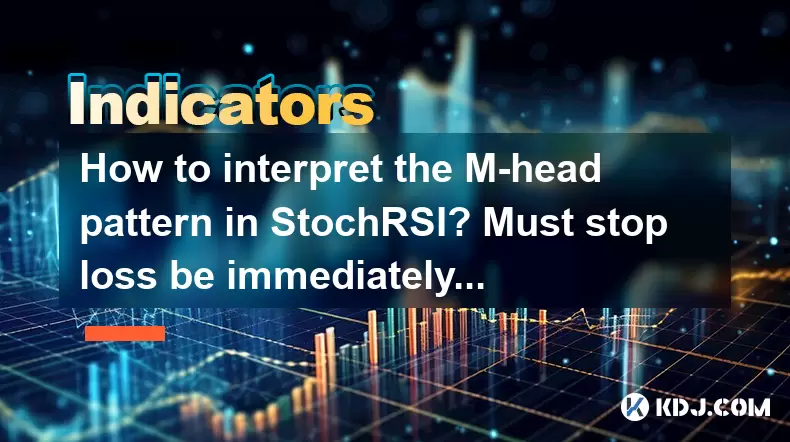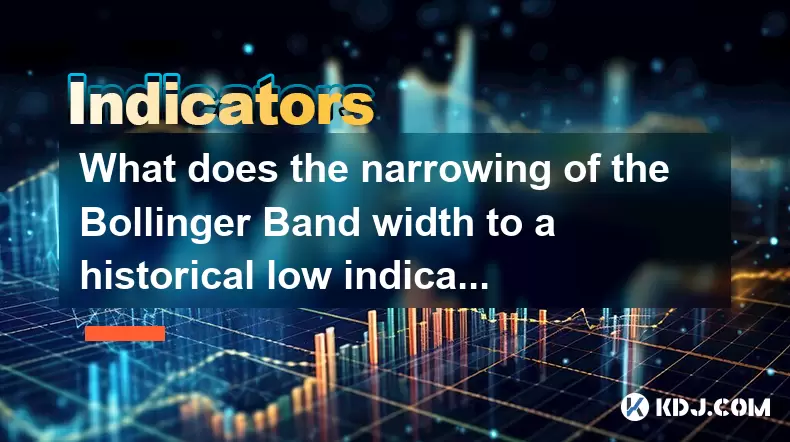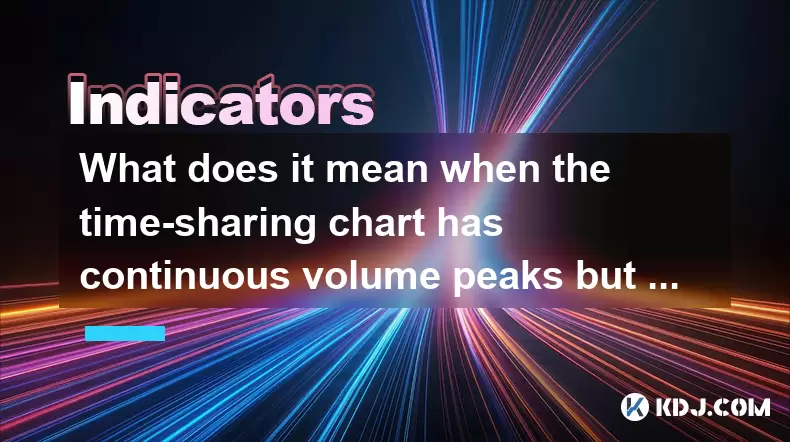-
 Bitcoin
Bitcoin $103,838.1703
5.33% -
 Ethereum
Ethereum $2,364.7328
10.94% -
 Tether USDt
Tether USDt $1.0007
0.03% -
 XRP
XRP $2.0950
9.02% -
 BNB
BNB $634.7170
5.25% -
 Solana
Solana $142.0264
11.70% -
 USDC
USDC $1.0000
0.00% -
 TRON
TRON $0.2728
5.18% -
 Dogecoin
Dogecoin $0.1598
10.80% -
 Cardano
Cardano $0.5655
9.94% -
 Hyperliquid
Hyperliquid $37.8554
11.16% -
 Sui
Sui $2.7196
17.77% -
 Bitcoin Cash
Bitcoin Cash $458.7795
4.67% -
 Chainlink
Chainlink $12.4271
12.53% -
 UNUS SED LEO
UNUS SED LEO $9.0769
0.74% -
 Avalanche
Avalanche $17.7117
12.43% -
 Stellar
Stellar $0.2392
9.83% -
 Toncoin
Toncoin $2.8765
9.58% -
 Shiba Inu
Shiba Inu $0.0...01131
11.69% -
 Litecoin
Litecoin $84.0378
9.79% -
 Hedera
Hedera $0.1456
14.65% -
 Monero
Monero $305.0298
5.16% -
 Ethena USDe
Ethena USDe $1.0006
0.03% -
 Dai
Dai $1.0001
0.02% -
 Polkadot
Polkadot $3.3522
10.31% -
 Bitget Token
Bitget Token $4.0785
3.25% -
 Uniswap
Uniswap $6.7682
13.08% -
 Pepe
Pepe $0.0...09557
13.29% -
 Pi
Pi $0.5253
9.79% -
 Aave
Aave $250.5247
16.65%
How to interpret the M-head pattern in StochRSI? Must stop loss be immediately used?
The M-head pattern in StochRSI signals a bearish reversal with two peaks; traders should set a stop loss above the highest peak to manage risk effectively.
May 24, 2025 at 11:56 pm

Introduction to the M-Head Pattern in StochRSI
The M-head pattern is a popular technical analysis tool used by traders to identify potential reversal points in the market. When applied to the Stochastic Relative Strength Index (StochRSI), this pattern can help traders make informed decisions about when to enter or exit trades. The StochRSI itself is an oscillator that measures the level of the RSI relative to its high-low range over a set period of time, providing a more sensitive indicator of market momentum.
Understanding the M-Head Pattern
The M-head pattern in StochRSI consists of three distinct points that form the shape of the letter 'M'. This pattern indicates a potential bearish reversal. The first peak of the M represents the initial high in the StochRSI, followed by a dip, and then a second peak that reaches the same level as the first peak. The formation of the second peak suggests that the upward momentum may be waning, and a reversal could be imminent.
Identifying the M-Head Pattern on StochRSI
To identify the M-head pattern on a StochRSI chart, follow these steps:
- Locate the first peak: Look for the StochRSI to reach a high point. This is the first peak of the M.
- Observe the dip: After the first peak, the StochRSI should decline to a lower level.
- Identify the second peak: The StochRSI should then rise again to reach a level that is approximately the same as the first peak.
- Confirm the pattern: The pattern is confirmed when the StochRSI declines again after the second peak, signaling a potential reversal.
The Role of Stop Loss in Trading the M-Head Pattern
A stop loss is a critical risk management tool that helps traders limit potential losses. When trading the M-head pattern in StochRSI, the decision to use a stop loss immediately depends on several factors, including the trader's risk tolerance, market volatility, and the overall trading strategy.
Implementing a Stop Loss with the M-Head Pattern
To effectively implement a stop loss when trading the M-head pattern, consider the following steps:
- Determine the entry point: Once the M-head pattern is confirmed, decide on your entry point for the trade. This is typically after the second peak, as the StochRSI begins to decline.
- Set the stop loss level: Place the stop loss just above the highest point of the M-head pattern. This level acts as a safety net, ensuring that if the market moves against your trade, your losses are capped.
- Monitor the trade: Keep an eye on the trade to see if the StochRSI continues to decline as expected. If it does, you may choose to adjust the stop loss to lock in profits or minimize losses further.
Immediate Use of Stop Loss: Pros and Cons
Using a stop loss immediately after identifying the M-head pattern has both advantages and disadvantages. On one hand, it helps protect your capital from significant losses if the market does not move as anticipated. On the other hand, setting a stop loss too close to the entry point can result in being stopped out prematurely due to normal market fluctuations.
Factors Influencing the Decision to Use a Stop Loss
Several factors can influence the decision to use a stop loss immediately when trading the M-head pattern:
- Market volatility: In highly volatile markets, a stop loss can help manage risk more effectively.
- Trading timeframe: Short-term traders might prefer immediate stop losses to protect against quick market reversals, while longer-term traders might have more flexibility.
- Risk tolerance: Traders with lower risk tolerance may opt for immediate stop losses to safeguard their investments.
Practical Example of Trading the M-Head Pattern with StochRSI
Let's consider a practical example of how to trade the M-head pattern using StochRSI:
- Scenario: You notice the StochRSI on a 15-minute chart of Bitcoin reaching a high of 0.80, then dropping to 0.40, and rising again to 0.80.
- Entry point: You decide to enter a short trade once the StochRSI starts declining after the second peak at 0.80.
- Stop loss placement: You set your stop loss at 0.82, just above the highest point of the M-head pattern.
- Trade monitoring: As the StochRSI continues to decline, you monitor the trade to see if it reaches your target level or if adjustments to the stop loss are necessary.
Technical Considerations for the M-Head Pattern
When using the M-head pattern in StochRSI, it's important to consider additional technical indicators to confirm the signal. For example, combining the M-head pattern with other indicators like moving averages, trend lines, or volume can provide a more robust trading strategy.
FAQs
Q1: Can the M-head pattern be used on different timeframes?
Yes, the M-head pattern can be applied to various timeframes, from short-term charts like 5-minute or 15-minute intervals to longer-term charts like daily or weekly intervals. The key is to adjust your trading strategy and stop loss levels according to the chosen timeframe.
Q2: Is the M-head pattern effective in all market conditions?
The effectiveness of the M-head pattern can vary depending on market conditions. In trending markets, the pattern may be more reliable, while in ranging markets, it might produce more false signals. It's crucial to use additional indicators and analysis to confirm the pattern's validity.
Q3: How can I improve the accuracy of the M-head pattern?
To improve the accuracy of the M-head pattern, consider the following strategies:
- Use multiple timeframes: Analyzing the pattern across different timeframes can provide a more comprehensive view of market trends.
- Combine with other indicators: Using other technical indicators like the MACD or RSI can help confirm the M-head pattern's signals.
- Backtest the strategy: Testing the M-head pattern on historical data can help you refine your entry and exit points, as well as your stop loss levels.
Q4: What other patterns should I be aware of when using StochRSI?
In addition to the M-head pattern, other patterns to look out for when using StochRSI include the W-bottom pattern, which indicates a potential bullish reversal, and the divergence pattern, where the price and StochRSI move in opposite directions, signaling a possible trend reversal.
Disclaimer:info@kdj.com
The information provided is not trading advice. kdj.com does not assume any responsibility for any investments made based on the information provided in this article. Cryptocurrencies are highly volatile and it is highly recommended that you invest with caution after thorough research!
If you believe that the content used on this website infringes your copyright, please contact us immediately (info@kdj.com) and we will delete it promptly.
- Bitcoin Scaling Showdown: Lightning Network, Sztorc, and the Future of Payments
- 2025-06-24 04:25:12
- Cathie Wood, ARK Invest, and Circle Shares: A Wild Ride on the Stablecoin Wave
- 2025-06-24 04:25:12
- Download 2025: Live Review Through Martha's Lens
- 2025-06-24 04:32:10
- Turtle Club Joins Kaito Leaderboard: A New Era for Ecosystem Push
- 2025-06-24 04:35:12
- Crypto Penny Coins: Hunting for Monster Gains in 2025
- 2025-06-24 02:45:12
- Ethereum Whale Dips Into Crashing ETH: Smart Move?
- 2025-06-24 02:25:12
Related knowledge

How to interpret that the time-sharing chart shows "volume and price rise together" but the MACD red column shortens?
Jun 24,2025 at 01:08am
Understanding the Concept of 'Volume and Price Rise Together'In cryptocurrency trading, when a time-sharing chart shows that both volume and price rise together, it is typically interpreted as a sign of strong buying pressure. This means more traders are entering long positions, pushing the price higher while increasing the trading volume. This phenomen...

Is it contradictory that the moving average system is arranged in a bullish pattern but the DMI shows a decline in trend strength?
Jun 23,2025 at 11:43pm
Understanding the Moving Average and DMI RelationshipIn cryptocurrency trading, technical analysis plays a crucial role in identifying potential trends and making informed decisions. Two of the most commonly used indicators are the Moving Average (MA) and the Directional Movement Index (DMI). While both tools aim to provide insight into market direction...

How to interpret that the Williams indicator quickly turns back in the overbought area but does not fall below the 50-axis?
Jun 24,2025 at 02:01am
Understanding the Williams %R Indicator in Cryptocurrency TradingThe Williams %R indicator, often referred to as Williams Percent Range, is a momentum oscillator used by traders to identify overbought or oversold conditions in financial markets, including cryptocurrency. It ranges from 0 to -100, where values above -20 are considered overbought and thos...

What is the significance of the gap formed by the gap opening not being filled within five days?
Jun 23,2025 at 09:42pm
Understanding Gaps in Cryptocurrency TradingIn the world of cryptocurrency trading, a gap refers to a situation where the price of an asset jumps from one level to another without any trading activity occurring between those two levels. This often happens over weekends or holidays when the market is closed, and significant news or events occur that impa...

What does the narrowing of the Bollinger Band width to a historical low indicate?
Jun 24,2025 at 02:35am
Understanding Bollinger Bands and Their Role in Technical AnalysisBollinger Bands, developed by John Bollinger in the 1980s, are a popular technical analysis tool used to measure market volatility. They consist of three lines: a simple moving average (SMA) in the center, typically over a 20-period setting, and two outer bands that are set at a standard ...

What does it mean when the time-sharing chart has continuous volume peaks but the price fluctuation is not large?
Jun 24,2025 at 03:49am
Understanding the Time-Sharing Chart in Cryptocurrency TradingIn cryptocurrency trading, time-sharing charts are crucial tools that help traders monitor real-time price movements and volume activity. These charts display data within specific time intervals—such as 1-minute, 5-minute, or 15-minute windows—and allow for granular analysis of market behavio...

How to interpret that the time-sharing chart shows "volume and price rise together" but the MACD red column shortens?
Jun 24,2025 at 01:08am
Understanding the Concept of 'Volume and Price Rise Together'In cryptocurrency trading, when a time-sharing chart shows that both volume and price rise together, it is typically interpreted as a sign of strong buying pressure. This means more traders are entering long positions, pushing the price higher while increasing the trading volume. This phenomen...

Is it contradictory that the moving average system is arranged in a bullish pattern but the DMI shows a decline in trend strength?
Jun 23,2025 at 11:43pm
Understanding the Moving Average and DMI RelationshipIn cryptocurrency trading, technical analysis plays a crucial role in identifying potential trends and making informed decisions. Two of the most commonly used indicators are the Moving Average (MA) and the Directional Movement Index (DMI). While both tools aim to provide insight into market direction...

How to interpret that the Williams indicator quickly turns back in the overbought area but does not fall below the 50-axis?
Jun 24,2025 at 02:01am
Understanding the Williams %R Indicator in Cryptocurrency TradingThe Williams %R indicator, often referred to as Williams Percent Range, is a momentum oscillator used by traders to identify overbought or oversold conditions in financial markets, including cryptocurrency. It ranges from 0 to -100, where values above -20 are considered overbought and thos...

What is the significance of the gap formed by the gap opening not being filled within five days?
Jun 23,2025 at 09:42pm
Understanding Gaps in Cryptocurrency TradingIn the world of cryptocurrency trading, a gap refers to a situation where the price of an asset jumps from one level to another without any trading activity occurring between those two levels. This often happens over weekends or holidays when the market is closed, and significant news or events occur that impa...

What does the narrowing of the Bollinger Band width to a historical low indicate?
Jun 24,2025 at 02:35am
Understanding Bollinger Bands and Their Role in Technical AnalysisBollinger Bands, developed by John Bollinger in the 1980s, are a popular technical analysis tool used to measure market volatility. They consist of three lines: a simple moving average (SMA) in the center, typically over a 20-period setting, and two outer bands that are set at a standard ...

What does it mean when the time-sharing chart has continuous volume peaks but the price fluctuation is not large?
Jun 24,2025 at 03:49am
Understanding the Time-Sharing Chart in Cryptocurrency TradingIn cryptocurrency trading, time-sharing charts are crucial tools that help traders monitor real-time price movements and volume activity. These charts display data within specific time intervals—such as 1-minute, 5-minute, or 15-minute windows—and allow for granular analysis of market behavio...
See all articles
























































































